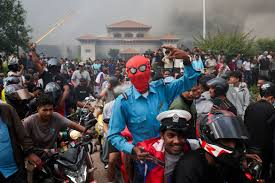Sept 10, 2025 — Kathmandu
Nepal’s Prime Minister K.P. Sharma Oli resigned after youth-led protests over corruption and censorship escalated into deadly unrest. At least 19 people were killed as police opened fire; protesters stormed and torched parts of parliament, forcing the army into the streets.
Why Gen Z Rebelled
The spark was a social media ban—widely seen as censorship. But the deeper anger lies in 22% youth unemployment, persistent poverty, and frustration at political nepotism. Nepal’s digitally savvy youth mobilized quickly, defying curfews and overwhelming state control.
Regional Parallels
Bangladesh (2024): Student protests toppled PM Sheikh Hasina, leaving a power vacuum.
Sri Lanka (2022): Economic collapse drove mass protests that ousted President Rajapaksa.
Like Nepal, both show how youth movements, once dismissed, can decisively unseat entrenched leaders.
What’s Next
Nepal faces a political vacuum. The army enforces curfews, while emerging figures like Kathmandu mayor Balendra Shah—a Gen Z icon—call for reform. Stability depends on whether parties allow youth voices into formal politics or risk prolonged unrest.
Bottom line: Nepal has joined a regional pattern where digitally networked youth, fueled by inequality and state overreach, can topple governments almost overnight.
Headlinenews.news Special report.
Full report on www.headlinenews.news



